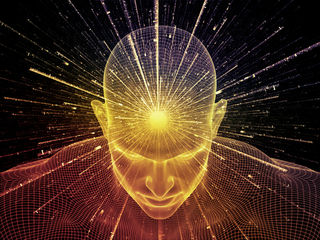Fantasies
Improving Physical Movement With Visualization
This mechanism can help improve muscular rehab.
Posted December 15, 2016

Visualization has been a well known mechanism for supporting the healing of injuries for many years. The mechanism has, thanks to advancements in the new mind-body medicine, been more fully understood. As a result our use of visualization in personal and professional healthcare has come a long way. And this mechanism is something we should be paying attention to.
Visualization has a powerful role in all types of healing – emotional and/or physical. For this post, however, I want to focus on psycho-motor skill and strengthening. Visualization can help sharpen and speed accuracy movement. This mechanism has been mined by the sport world for years as a key element to training both mind and body to hit peak performance automatically and faster. But it is useful to health and performance goals beyond sport.
A major tool in mind-body medicine, visualization may have a lot of potential for PT (physical therapies) and OT (occupational therapies) as well. It is important to understand that by visualization I am not talking about meditation in which you “visualize” a certain area of the body recuperating from injury or disease. I repeat, I am not talking about seeing yourself healthier, healing or healed.
What I am referring to is picturing (with your mind’s eye) yourself performing certain movements – e.g. walking, standing, or lifting and so on. If this is for athletic improvement, then the precise movement (technique) you are trying to master or improve. This visual or image can be enhanced by “seeing” the movement (the coordinated involvement) of all muscle groups supporting the activity. For example, various muscles in the feet, legs, torso, arms, and hands, etc. are coordinated in helping an individual get up from a chair or a couch.
By using the mind’s eye like a camera to provide images of the specific role of muscles and joints supporting your selected (specific) movement, a person can more deeply ingrain muscle coordination, strength and speed.
Visualization for this purpose needs plenty of repetition to send the mind the message that you want it to ingrain this specific “muscle memory.”
On another note, it also helps the individual practice therapeutic exercises during off times, which will work handily especially for those who may not have the stamina for longer training periods. In fact, the visualizations can help build the energy, confidence and feelings of reward needed for longer “workouts.”
The additional practice provided by targeted visualizations helps to continue to change the body’s electro-chemical activity to support your intended movement and your goals. It’s also a good way to maintain the cascade of feel-good hormones in an individual’s off-time, contributing to feelings of positivity, confidence and self-esteem and again, help improve the movement itself. A positive mindset also improves healing at many other levels – even the effectiveness of other treatments including pharmaceutical. So visualization can be a win-win practice.
Note: You don’t have to be injured to use this technique. In fact, you can use it to improve any physical activity from improving your golf swing to helping you sit more comfortably at your desk at work.
Always check with your physician or healthcare professional(s) first before attempting techniques such as visualization or any other complementary tools to see if they are right for you.
There are many body-energy techniques you can combine with visualization to ramp up its effectiveness. For a more thorough look, you may wish to check out my newest book, BODY INTELLIGENCE – Harness Your Body’s Energies for Your Best Life.


